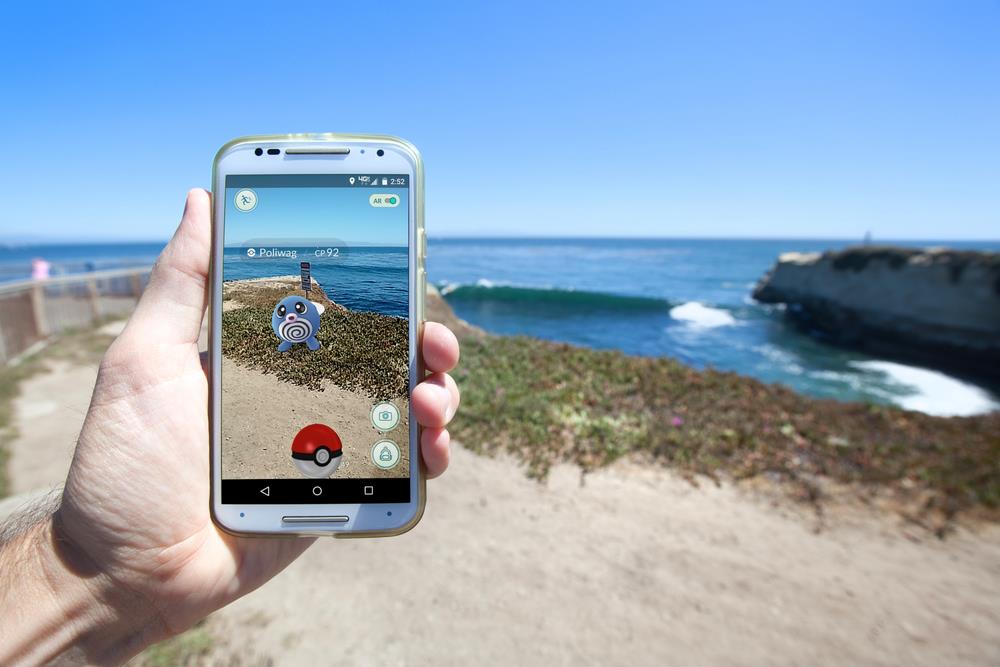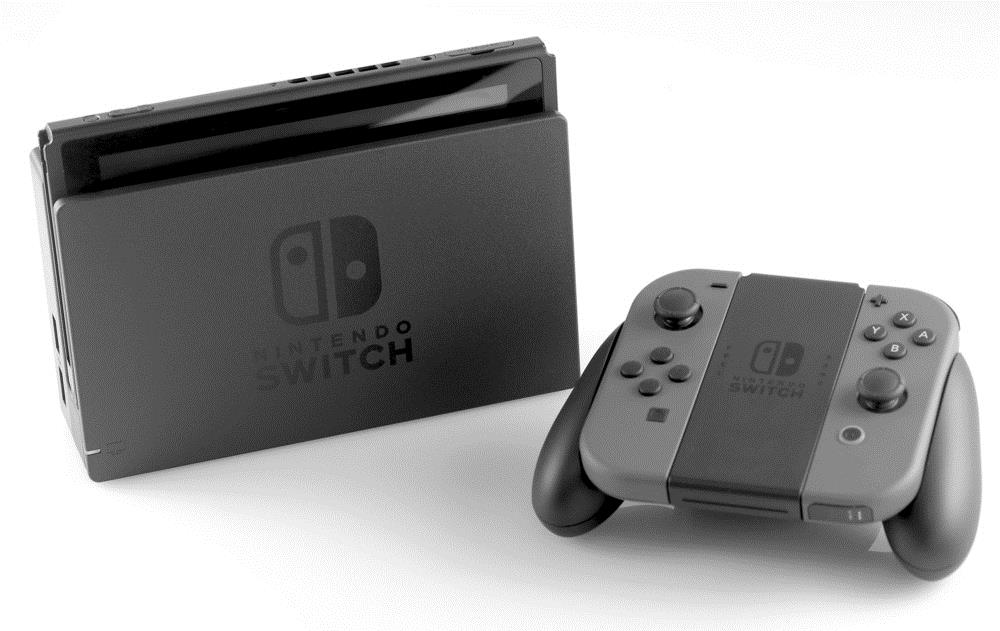Nintendo Switch: how a 127yr old playing card publisher became a multi-platform pioneer
Back in July of 2016, Japanese games publisher Nintendo catapulted augmented reality (AR) into the mainstream with the launch of its mobile gaming app, Pokemon GO. The app was a global success, attracting a reported 50 million active monthly users at its peak. It also sent the Nintendo share price skyrocketing, despite the fact that the game was actually produced by Niantic Labs, a US software development company based in San Francisco that is only part owned by the Japanese multinational.
Either way, Nintendo’s re-emergence at the cutting edge of games publishing was cemented, as Ambarish Mitra, CEO of Blippar, told UK-based business publication Marketing Week at the time: “Forget augmented reality, we have not seen anything succeed on this scale before, period.”

But things were not always this way. By the beginning of the new millennium, flagging console and cartridge sales had become synonymous with the decline of the analogue age. Gamers were switching to more digital and network orientated platforms like the Sony PlayStation and the Microsoft Xbox. In 2002 Hiroshi Yamauchi – the company’s president since 1949 – retired, to be replaced by Satoru Iwata, the first Nintendo president to be completely unrelated to the Yamauchi family through blood or marriage since its founding in 1889. As print publishers were realising the growing need to expand online, so too the one time playing card specialist was recognising the emergence of the digital – and perhaps more importantly – the mobile age.
A decade of mixed fortunes followed, with the success of the Nintendo Wii in 2006 being succeeded by the relative failure of the Wii U in 2012. But with the launch of the Switch, the company seems to have re-established its market position.

Dan Dawkins is the global editor-in-chief of GamesRadar+, an entertainment website owned by Future Publishing that focusses mainly on video game related content. As the editor of a digital-native publication focussed on the gaming industry, he’s well placed to speak on the Nintendo Switch from both a technology, and a content, point of view:
“Switch delivers on a number of outcomes that brands often lose sight of,” says Dawkins. “Innovation needs to solve problems, and isn’t an end to itself. It isn’t the most powerful console, but solves a problem many gamers face: time-pressure and complexity. It’s both a home console and a portable console, and the machine switches between functions in seconds.”
“Perhaps even more importantly than that, content is king. Even though the hardware is super fun to set up and use… it’s just a gateway to the true appeal: content. Zelda: Breath of the Wild is one of the greatest games of all time, and it’s available from day one of launch. This in itself is a great example of the personality and fun that the Nintendo brand brings, which is all about family values. Switch runs contrary to what the console competition are trying to achieve, delivering easy-to-understand experiences best shared with friends, and is ultimately a symbol of a company at ease with itself.”
So just how did Nintendo propel itself back into the forefront of the digital age? And what insights can media publishers learn from this turnaround?
We’ve here highlighted 5 key areas of insight from the Nintendo Switch.
1. Multi-platform
The most striking thing about the Nintendo Switch is its sheer dedication to multi-platform, even down to the name. It’s not just that the content perfectly resizes itself for every screen – the entire User Experience (UX) that goes on around that content has been meticulously aesthetically and ergonomically planned. From traditional joypads, to more Wii style remotes, to the option to go full-on Game Gear/PlayStation Portable, the user experience around the Nintendo Switch’s content has been put at the very forefront of its design, making it a joy to play whichever platform the user chooses to consume that content on.
Of course, media publishers do not have the luxury (or the necessity) of creating physical hardware to accompany their content, but the emphasis on creating enjoyable user experiences across multiple screens is growing in the industry. Google’s Accelerated Mobile Pages (AMP) project has been showing some strong results, and at the Digital Innovators Summmit (DIS) in Berlin this year, we learned that UX is becoming an increasingly high priority for media brands. Ultimately, it’s not only about what content will look like on multiple screens, but thinking through the user journey to establish how it will be engaged with on each of them as well.
2. Legacy brands and exclusive content
What Nintendo does better than any other games publisher in the business, is to create legacy brands and develop exclusive content around them. This ensures that audiences cannot go to other platforms to seek out these experiences. If you want to play The Legend of Zelda: Breath of The Wild, then you’ll need to get yourself a Nintendo Switch (or a Wii U).
We find this approach right across the Nintendo cannon, from Mario to Donkey Kong, and even through to the high profile loan-signing of Sonic the Hedgehog, the former Sega-specific mascot. What it really demonstrates is a dedication to the development of quality content, and an understanding that audiences will keep coming back to known and trusted media brands if they are continually updated and developed in the right way.
With the high-profile Google/YouTube advertiser developments that have been playing out in the media recently, it is becoming clearer than ever before that trusted brands and premium content environments are highly valued by consumers and advertisers alike. In an internet age when the long-tail of content can be relatively unknown and indeed unreliable, recognisable and trusted media brands are highly sought-after.
3. Technology R&D
This doesn’t just go for direct investment in research and development. It represents Nintendo’s longstanding commitment to remaining at the forefront of technological change. Pokemon GO was actually criticised towards the end of 2016 when the initial buzz subsided and active user figures began to drop. However, by then the plaudits had been won, vast quantities of mobile users had introduced the Nintendo-owned trademark to their phones, and Nintendo’s position at the forefront of digital and mobile gaming technology had been established.
What this tells us is two clear things: 1. There are huge levels of investment being made into the research and development of new technologies. This is going on around publishers all the time and they do not necessarily need to invest vast sums of their own money to capitalise on them. And 2. Nintendo clearly gains a huge amount of brand reputation from trying new things. By taking legacy brands and applying them to new platforms and new technologies even if specific projects may not generate large revenues or last long-term, they can have hugely positive effects on awareness and on keeping Nintendo’s brands in the limelight.
With a stake in Niantic Labs – the company behind Pokemon GO – currently believed to be anywhere in the region of 10 per cent and 33 per cent, the return value for a company like Nintendo in investing in this kind of technology can be high.
4. Licensing and syndication
There’s a temptation to think as the industry moves increasingly from print into a digitally distributed world, that licensing and syndication opportunities are diminishing. But actually this is not necessarily the case. FIPP recently spoke to Ilkka Lavas, a Finnish entrepreneur who has taken over the 30-year-old City Magazine Finland. By shutting down the company’s print products and developing city guide software that can be licensed internationally, the rebooted company is achieving success by licensing its software around the world:
“We have built software around this magazine [brand] – a restaurant discovery tool, table order, and prepay tools. And that software package we are now licensing and selling to other media companies all around the world. So in Finland we are a media company with a digital side, but internationally we are a software development company.”
And this, of course, is a game that Nintendo has always played extremely well. By entering into partnership with software and development companies, creating and developing original brands like Mario and Pokemon, and simultaneously owning the hardware and being the distributor that allows other publishers the routes to market to put their games into audience’s hands, Nintendo offers a global blueprint for how to effectively orchestrate partnerships outside of a print setting. The key to all of these agreements is collaboration, and it’s one that the publishing industry is itself looking to increasingly with the advent of new technologies.
5. Physical products
In an increasingly digital world, especially on the back of a Pokemon GO project that saw the company achieve success by leveraging software on an existing hardware platform (smartphones), the question as to why Nintendo has chosen to focus on building and shifting physical Switch units is an interesting one. But shifting them it is, with some reports citing global sales as high as 2.5 million units in March alone. At approximately US$300 a piece, that would result in physical sale revenues of US$750m in launch month alone. Add on US$50 a pop for a copy of Zelda – which you can do when you’re selling physical copies of games – and you begin to see the full potential. With figures like this swimming around, Disney’s 2012 acquisition of Lucasfilm for just over US$4bn offers a comparative marker.

For legacy media publishers, the dominance of print titles and the vast revenue streams associated with selling physical copies of magazines is unlikely to return. But the Switch does remind us that that there are still strong physical products being made and sold around the world, and that content can be a leading way to attract consumers to them. The Switch’s combination of premium content, innovative technology, and physical product sales offers a glimpse into what a future media publishing model might look like, where content is monetised by helping to generate ‘end product sales’ in addition to attracting advertiser and subscriber revenue.
In general, the Nintendo Switch offers a fresh perspective on publishing content across multiple platforms in 2017. The popular myth that has longsince surrounded the company is that ‘Nintendo’ can be taken to mean ‘Leave luck to the Heavens’. Certainly, within the context of gaming, which allows users to take control of their own story as opposed to the more linear viewing of traditional print and broadcast content, this has a nice ring to it.
For publishers, the narrative has all too often in recent years been cast as belonging to key online entities like Facebook and Google, who at least from an online advertising point of view do undoubtedly hold considerable clout. But what the Nintendo Switch has shown in its short lifespan, just like Pokemon GO did before it, is that it is possible to build your own approach to publishing models in 2017, and that legacy media brands can be at the helm of innovation.
Moreover, the themes of multi-platform engagement, user experience, and an increasing desire for quality content that are emerging as key themes in the publishing industry this year, seem at present to be neatly packaged in microcosm form by this unique machine.
More like this
How a young digital entrepreneur turned around the fortunes of a Finnish magazine icon
Publishers ‘missing out on huge tech R&D investments made around them’
BBC Worldwide on its exclusive content partnership deal with Snapchat
[Congress speaker Q&A] ‘Experiment with VR, but the bigger opportunity is AR’
Five media tech trends from March
Condé Nast and Joe Media on creating a sustainable video strategy






